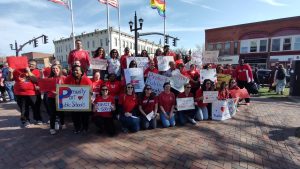Inequality in U.S. Wealth Distribution Must Be Addressed
November 8, 2013
Inequality is a serious problem in our country. The poverty rate in the United States is 15 percent, meaning 46.5 million people live in poverty in our country. Fourteen and a half percent of the country is also food insecure, meaning that they lack adequate access to food.
It is truly shocking, given these con- ditions, that inequality is not a central issue in our country. Yes, it is certainly talked about and addressed as a problem, but the sheer number of people living in penury in our country day after day, year after year, points to a systemic failure in our society. The divide between rich and poor continues to grow. In 2013, the richest 10 percent of Americans will receive 9.5 times the market income of the poorest 10 percent, a marked increase from even six years ago, when the richest 10 percent took in only nine times as much income as the poorest 10 percent. It is estimated that 400 Americans own more than half the wealth in the United States.
With such a great disparity in wealth, it is increasingly difficult to argue that we live in a egalitarian community, and it is increasingly necessary to distribute a large portion of wealth to the poorest of our society.
The vast inequality in our country is detrimental to the population as a whole. Many millions who could make great contributions to our society and culture are instead forced to live without proper education to channel their potential. The concentration of material resources at the top of the social pyramid has also led to a great disillusionment with government: Most people no longer believe our social system leads to tangible benefits in their lives, because it does not.
The conception that we live in an increasingly equal society, that in the past millennia we have largely destroyed the hierarchical social structure so decried in pre-modern history, proves manifestly false. While the material conditions enjoyed by the average, or even the poorest,Americans are far above those enjoyed by the lower class even a century or two ago, modernity has not destroyed the class system.
If anything, the wealth gap is becoming more entrenched with each coming year, as the upper class accumulates more wealth and the rest of the population only stays at the same income level or becomes less wealthy due to stagnant incomes and low economic growth. The vastly unequal distribution of wealth in our country is a major problem and should be addressed. Radical change is the only thing that can rectify this impasse.
A large amount of wealth must be transferred from the rich to the poor in order to effectively create a more just so- ciety. The best way to do this is simply to create significantly higher taxes on the rich. If just a fraction of the wealthiest Americans gave a portion of their income to the most impoverished, the social changes would be tremendous. If, say, there were a 50 percent tax on the wealthiest of Americans, it would allow the government to vastly expand social programs. If the education system were reformed so that everyone going to public school received a good education instead of a mediocre one, and so that higher education was paid for by the government, it would go a long way toward creating a more egalitarian nation. Likewise, if healthcare, welfare and other social services were expanded, it would also raise the quality of life of those in poverty who do not receive adequate healthcare, employment op- portunities and other crucial forms of support.
The specifics of wealth distribution would have to be handled by an expert at a later time, but the point is that the riches of the upper class could and should be transferred downward in order to improve the desperate conditions of the destitute. We as a society must recognize the moral imperative of helping those in poverty and take concrete and radical steps to distribute wealth to the lower class.


















